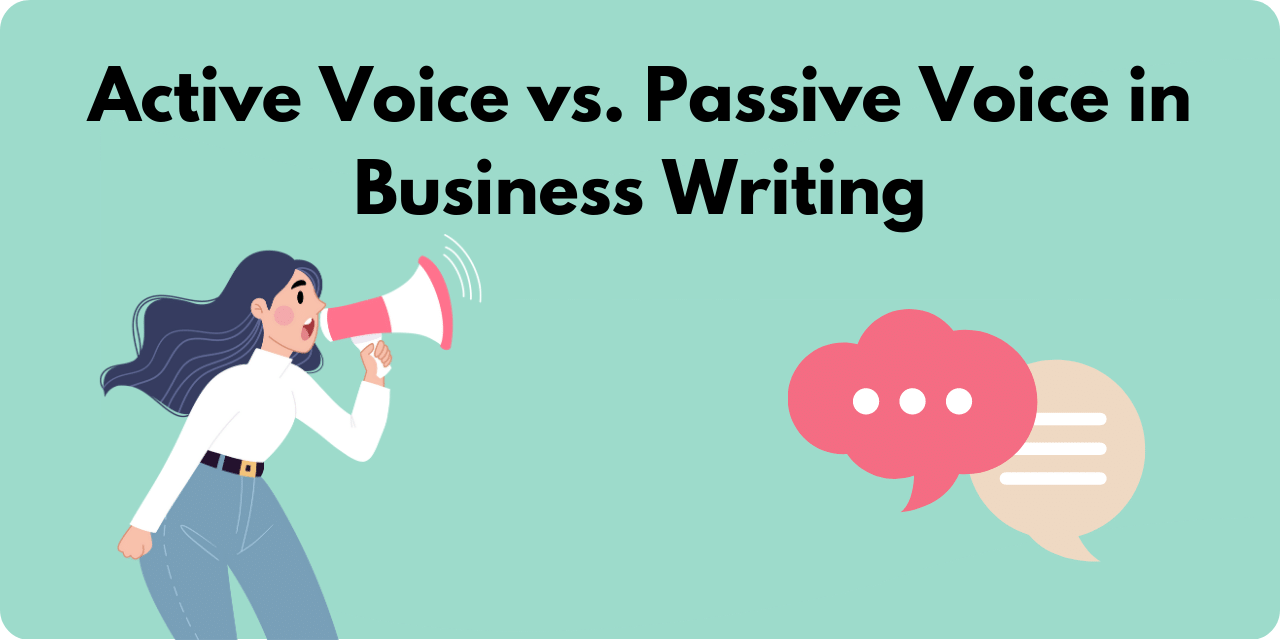Effective email copywriting is essential for engaging your audience and driving conversions. One key aspect of strong email copy is using active voice, which makes your messages more direct, clear, and compelling. Passive voice, on the other hand, can create ambiguity and weaken your message.
Understanding Passive vs. Active Voice
What is Passive Voice?
In passive voice, the subject of the sentence is acted upon by the verb. For example:
- Passive Voice Example: "The email was sent by the marketing team."
What is Active Voice?
In active voice, the subject performs the action described by the verb. For example:
- Active Voice Example: "The marketing team sent the email."
Active voice is typically preferred in email copy because it is more engaging and easier to understand.
Why Avoid Passive Voice?
1. Clarity and Directness
- Clearer Messages: Active voice makes your writing more direct and easier to follow, helping readers understand your message quickly.
- Enhanced Engagement: Direct, action-oriented language engages readers better and keeps their attention focused.
2. Stronger Calls-to-Action (CTAs)
- More Persuasive: Active voice strengthens CTAs by making them more immediate and compelling.
- Improved Response Rates: Clear and direct CTAs increase the likelihood of readers taking the desired action.
3. Improved Readability
- Simpler Sentences: Active voice typically results in shorter, more straightforward sentences that are easier to read.
- Enhanced Flow: Using active voice helps maintain a natural flow in your email copy, making it more enjoyable to read.
Strategies to Avoid Passive Voice in Email Copy
1. Identify Passive Voice
- Recognize Indicators: Look for forms of the verb “to be” (is, was, were, etc.) followed by a past participle. For example: "The report was completed by the team."
- Use Tools: Utilize grammar-check tools like Grammarly or Hemingway to identify passive voice in your drafts.
2. Convert Passive Sentences to Active
- Find the Subject: Identify the doer of the action in the passive sentence.
- Rephrase the Sentence: Rewrite the sentence so that the subject performs the action. For example:
- Passive: "The report was reviewed by the manager."
- Active: "The manager reviewed the report."
3. Be Specific with Your Language
- Detail the Action: Clearly specify who is performing the action and what the action is. For example:
- Passive: "The issue was resolved quickly."
- Active: "Our team resolved the issue quickly."
4. Use Action Verbs
- Strong Verbs: Choose verbs that convey action and energy. Action verbs make your sentences more dynamic and engaging. For example:
- Passive: "A discount was offered to all customers."
- Active: "We offered a discount to all customers."
5. Keep Sentences Short and Simple
- Avoid Complexity: Short, simple sentences are less likely to contain passive voice and are easier for readers to understand.
- Focus on Clarity: Ensure each sentence clearly conveys who is doing what.
6. Review and Revise Your Copy
- Edit Carefully: Review your email copy for passive voice during the editing process. Revising sentences for clarity and engagement can significantly improve your email's effectiveness.
- Seek Feedback: Ask colleagues or use feedback tools to identify passive voice and other areas for improvement.
Examples of Avoiding Passive Voice
1. Email Subject Lines
- Passive: "A discount is being offered on all products."
- Active: "Get 20% off on all products today!"
2. Email Body Content
- Passive: "The report was completed by the team last week."
- Active: "Our team completed the report last week."
3. Calls-to-Action
- Passive: "Your support is appreciated by our team."
- Active: "We appreciate your support!"
Tools and Resources
1. Grammar and Writing Tools
- Grammarly: Identifies passive voice and suggests active alternatives.
- Hemingway Editor: Highlights passive voice and provides readability scores.
2. Writing Guides
- Style Guides: Refer to style guides like The Chicago Manual of Style or The Elements of Style by Strunk and White for additional tips on using active voice.
3. Writing Courses
- Online Courses: Consider enrolling in writing courses that focus on active voice and effective communication to improve your skills further.
Our Services
1. Email Copywriting Consultation
- Expert Review: Our team provides expert review and feedback on your email copy, focusing on eliminating passive voice and enhancing clarity.
- Strategy Development: We help develop a clear and direct writing strategy tailored to your audience and objectives.
2. Copywriting Services
- Active Voice Emphasis: We craft engaging email copy using active voice to ensure clarity and effectiveness.
- Tailored Content: Our services include writing and editing email content to align with your brand voice and communication goals.
3. Training and Workshops
- Writing Workshops: Participate in our workshops to learn how to avoid passive voice and improve your overall email copywriting skills.
- Training Programs: Access comprehensive training programs on effective writing techniques and best practices.
Contact Us
Ready to improve your email copy and eliminate passive voice? Contact us today to schedule a consultation or learn more about our copywriting and training services. Our team of experts is here to help you craft compelling and effective email content that drives results.
Get in Touch
For more information or to get started, reach out to us via our website, email, or phone. Let us help you enhance your email communication and achieve your marketing goals with active and engaging copy.
Final Thought
Avoiding passive voice in your email copy is crucial for creating clear, direct, and engaging messages. By implementing the strategies outlined above and utilizing our services, you can optimize your email content to drive better results and effectively communicate with your audience. Contact us today to improve your email copywriting and achieve your marketing objectives.
FAQ:
1. What is passive voice, and why should I avoid it in my email copy?
Passive voice occurs when the subject of the sentence is acted upon by the verb. For example: "The report was reviewed by the manager." In contrast, active voice has the subject performing the action: "The manager reviewed the report." Avoiding passive voice in email copy is important because it:
- Enhances Clarity: Active voice makes sentences more straightforward and easier to understand.
- Increases Engagement: Direct language is more engaging and keeps readers focused.
- Strengthens CTAs: Active voice makes calls-to-action (CTAs) more compelling and persuasive.
2. How can I identify passive voice in my email copy?
To identify passive voice:
- Look for "To Be" Verbs: Passive voice often includes forms of the verb "to be" (is, was, were) followed by a past participle. For example, "The email was sent by the team."
- Use Grammar Tools: Tools like Grammarly or Hemingway can highlight passive voice and suggest improvements.
- Read Aloud: Reading your copy aloud can help you spot awkward or indirect phrasing indicative of passive voice.
3. What are some common signs of passive voice in email copy?
Common signs of passive voice include:
- Use of "To Be" Verbs: "The email was sent yesterday."
- Lack of Clear Subject: The subject performing the action is often missing or implied rather than stated directly.
- Complex Sentence Structure: Sentences that seem overly complicated or indirect may be passive.
4. How do I convert passive voice to active voice?
To convert passive voice to active voice:
- Identify the Subject: Determine who is performing the action.
- Rephrase the Sentence: Rewrite the sentence so that the subject is doing the action. For example:
- Passive: "The form was completed by the client."
- Active: "The client completed the form."
5. Are there specific strategies for avoiding passive voice in email CTAs?
Yes, effective strategies for CTAs include:
- Use Direct Language: Clearly state what action you want the reader to take. For example, "Download your free guide" is more direct than "A free guide can be downloaded by you."
- Employ Strong Verbs: Choose action verbs that drive the reader to act immediately, like "Get," "Join," or "Discover."
- Be Specific: Detail what benefits the reader will gain by taking the action, making the CTA more enticing.
6. How can I ensure that my entire email avoids passive voice?
- Review and Edit: During the editing phase, check for passive constructions and rephrase them into active voice.
- Practice Active Voice: Regularly practice writing in active voice to make it a habit in your copywriting.
- Seek Feedback: Ask colleagues or use professional editing services to review your email copy for passive voice.
7. What tools can help me avoid passive voice in my email copy?
Useful tools include:
- Grammarly: Highlights passive voice and offers suggestions for rephrasing.
- Hemingway Editor: Identifies passive voice and provides readability scores to help you simplify your writing.
- ProWritingAid: Analyzes your writing for passive voice and suggests improvements.
8. Can passive voice ever be acceptable in email copy?
While active voice is generally preferred for clarity and engagement, passive voice can be acceptable in certain contexts:
- Emphasis on the Action: When the action or outcome is more important than the actor. For example, "The campaign was completed on time."
- Formal Tone: In more formal or technical writing, passive voice might be used to maintain a professional tone.
9. How can I practice writing in active voice?
- Rewrite Practice: Take examples of passive voice sentences and practice rewriting them in active voice.
- Read Actively: Study well-written emails and note how they use active voice.
- Writing Exercises: Engage in writing exercises focused on creating active voice sentences.
10. What services do you offer for improving email copy?
We offer a range of services to help you enhance your email copy:
- Email Copywriting: Expertly crafted email copy that uses active voice and compelling language to drive engagement.
- Editing Services: Thorough review and editing of your email copy to eliminate passive voice and improve clarity.
- Training Workshops: Workshops and training programs focused on writing techniques, including avoiding passive voice.
11. How can I get started with your services?
To get started:
- Contact Us: Reach out via our website, email, or phone to schedule a consultation or request more information.
- Discuss Your Needs: Share details about your email copy needs and objectives with our team.
- Get a Quote: Receive a customized quote for our services based on your requirements.
12. What are the benefits of using your services to avoid passive voice in email copy?
- Improved Clarity: Enhanced readability and straightforward messaging.
- Higher Engagement: More compelling and action-oriented content that engages readers.
- Professional Quality: Professionally written and edited email copy that aligns with best practices and industry standards.
For further assistance or to improve your email copywriting skills, contact us today. Let us help you craft clear, engaging, and effective email content that drives results.























